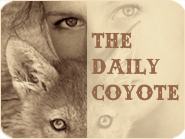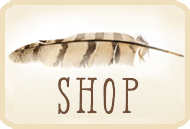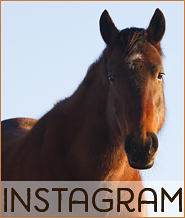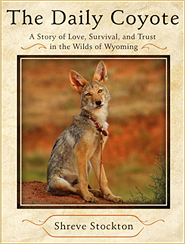The Long and Winding and Beautiful and Tragic Story of 3M ~ Part III
Part I is here.
Part II is here.
The day after 6 calved, Star Baby calved. Star Baby is one of my Angus cows. She is Star’s daughter, who was my first Angus cow, given to me by Mike. (Star’s birth story is crazy, too, and can be read here.) Star loves attention and loves to be brushed, but Star Baby has never really been a people cow. She’s not fearful of people, not at all; she just has never wanted much to do with us as long as we bring her food. I get the feeling she thinks we are beneath her. If I try to pet her, she tosses her head like, “get your filthy hands off me,” and walks away.
When I saw Star Baby was calving, I crept out to the hill to watch. I had binoculars and I didn’t get too close; I was only there to make sure everything was OK. Star Baby saw me and glared at me, got up, walked a short ways away, and lay down again – this time behind a sagebrush with her face facing me and her backside arranged so I couldn’t see hooves or delivery or anything. So I got up, walked down the hill she was lying atop, circled around, and hiked up the other side so I could see what was going on. I wasn’t as sneaky as I’d hoped, but Star Baby tolerated my presence and her delivery went smoothly, even though she continued to glare at me and was obviously irritated that I was intruding. Once her calf shook its head and Star Baby stood up to lick it off, I went back to the house and left them together.
By late afternoon, Star Baby’s calf still hadn’t had her first meal. I watched from the house with binoculars, saw her calf nuzzle around Star Baby’s udder and try to suck, but she never actually got a teat in her mouth, even though Star Baby stood perfectly still for her calf. The calf could not figure out Star Baby’s udder. Star Baby’s udder is unique. She has a round, nearly spherical, bag and her teats don’t dangle down, they point forward. They are perfectly positioned to slide right into a calf’s mouth, as long as the calf is coming at the teat from the perfect position, head on. But if the calf tries to nurse from the side, it can be challenging, especially when the teats are engorged and rigid as they are right after birth, especially for a newborn who is unsteadily trying to figure out how it all works. Star Baby’s baby couldn’t figure it out. We had to intervene.
With many cows, I can go up to them in the pasture and help maneuver their babies onto teats for the first time if need be – the cows will stand still, more focused on their calf than on me. But Star Baby’s disdain for people thwarted such simplicity. When I approached Star Baby and her calf, she hustled away, mooing for her baby to follow her. Down the hill she went, and the more I followed, the farther she traveled. Since she wouldn’t stand for me, or even let me get close, I needed to get Star Baby and her calf into the little corral in front of the barn with 6 and 6’s calf and I needed Mike’s help to get them in.
Star Baby wanted no part of this plan. She trotted in sweeping figure eights, her udder swinging, her calf prancing after her. A gusty windstorm blew in and red dirt coated our skin and filled our ears and blinded us as we chased after Star Baby, but we couldn’t stop and wait out the storm, because who knew how long it would last and it was going to get dark and we had to just ‘git ‘er done’ and it was miserable. We finally got them in the little corral and as I was tying the panels shut, Star Baby, furious about being contained, reached through the slats in the panels and tried to bite me! I’ve never had a cow try to bite me before. I told her all we wanted to do was help her and her calf. I always tell the animals my intentions, the “why” behind what I’m doing with them, if they seem stressed.
We have a head catch set outside the barn, along the west wall in the alley between the barn and the chicken house. A head catch is a contraption of two metal panels that open and close with a big lever, and these panels gently close around a cow’s neck without actually touching the cow. A cow’s neck is so much narrower than her head and her shoulders that when the panels are in place, she can’t move forward or backwards. Since the panels aren’t squeezing her neck or even touching it, she can move her head up and down and eat while standing in the head catch. Head catches aren’t inherently traumatizing to a cow, as long as the person running the levers doesn’t let the panels slam against the cow or otherwise abuse her.
Once, I was helping another rancher work his cows, and if a cow balked for even a moment before entering the chute and head catch, he hit her with a hot shot (aka electric cattle prod, which gives a huge shock) to make her jump forward. I was like, ‘no wonder your cows don’t want to go into the chute – they associate it with pain because you shock them to get them in!’ It was awful to watch. If a cow can take a moment to sniff it out and isn’t traumatized by the people around her, she will have no problem standing in a head catch. It’s kind of like riding the subway at rush hour. You might be a little tentative about stepping into a packed train, and once you do, you can’t really move, but overall, it’s not a big deal, as long as no awful men molest you while you’re trapped.
I lured Star Baby into the head catch with some hay, and as she stood and ate, she began to relax, and her breathing got calm and deep. While she ate, I helped her calf stand in the right spot to get one of Star Baby’s torpedo teats in her mouth and nurse for the first time.
When Star Baby was getting close to calving and her udder was growing, it puzzled me. Her left front quarter was not filling like the rest. I couldn’t figure out if she was letting another calf suck that quarter (extremely unlikely with an older cow) or if it was going to fill up last (abnormal, as all quarters fill at the same rate) or what. Now that I had a chance to study her udder up close, I understood. Star Baby must have had undiagnosed mastitis in that quarter last year, and now that quarter was dead – not producing milk at all.
Last year, I was so focused on the book, I wasn’t out with the cows as much as usual. And Mike is not one to stare at udders the way I’m inclined to do as a milkmaid – plus, Angus cows generally aren’t at risk for mastitis under normal circumstances because they don’t produce surplus milk and their calf will keep their udder drained and healthy. But Star Baby’s udder this year was enormous for an Angus cow, and it must have been big enough last year that her calf never needed to drink from all four quarters to stay satisfied. I’m guessing her calf ignored one quarter consistently, and after a while it got mastitis, and we didn’t notice or treat it. Now, that quarter will never produce milk.
Luckily for Star Baby and all calves present and future, her remaining three quarters were producing a ridiculous amount of milk. So much milk, her calf was not going to be able to drink it all until she grew bigger and more voracious. Star Baby’s calf drank and drank and drank until she got full and still didn’t even drain one quarter. Star Baby was going to need help getting all that milk out every day or risk mastitis again.
I had put 6‘s calf with Roxy twice that day but I knew she could eat more. She was getting adequate milk from Roxy but not enough to properly stuff herself. And so when Star Baby’s calf had finished her first meal, I brought 6’s calf alongside Star Baby and 6’s calf went to town. She grabbed a teat with her tongue and sucked till she was in gluttonous milk ecstasy. When she was full enough to burst, she waddled back to 6, who licked her and loved her though she could not feed her.
Even after both calves had their fill, Star Baby’s udder was still full of milk – colostrum, actually. It was getting late and it was still windy and I knew Star Baby’s calf would nurse a few more times during the night, but I didn’t want to neglect Star Baby’s udder, especially considering her history, so I sat beside the head catch and milked her. Star Baby was the most perfectly polite cow I’d ever milked, more so than Daisy, even more so than Roxy. She was calm and patient. Or perhaps she was just pleased that I was kneeling in the dirt at her feet.
We’re not even halfway through this saga!
Part IV is here.
The Long and Winding and Beautiful and Tragic Story of 3M ~ Part II
When Mike and I returned to the barn an hour later, both Roxy and her calf were standing and the calf was trying to nurse. It can be challenging for a newborn to figure out how to balance and find a teat at the same time and the inevitable fumbling drives me crazy to watch. I know I should give calves time to figure it out on their own, and I try to keep my distance, but it’s so hard to watch a tiny, hungry baby suck on a teat sideways or fall right past a teat (over and over) or finally grasp a teat in their mouth just to have their mother turn to admire or lick her new baby and that movement swings the teat away and the fumbling begins anew. Sometimes I can’t help but intervene.
I crouched next to Roxy and her calf and guided a teat into his mouth and he latched on, and Roxy stood perfectly still while her calf had his first meal. Mike and I sat together in the hay, still overwhelmed from the breech delivery, and watched the simple beauty of Roxy nursing her calf. “How many people get to experience this in their lives,” I wondered to Mike. He didn’t know. I didn’t know this kind of life existed fifteen years ago.
Because the breech birth was hard on Roxy and because I wanted to watch her calf closely for any sign of illness or respiratory issues, I kept both of them in the barn for monitoring. Roxy’s udder was large for a heifer due to Daisy’s genetics – not enormous, but she had more milk than her newborn could drink. That evening, after her calf had drank twice and her udder still looked tight, I decided it would probably be best for Roxy if I tried to milk the two teats her calf hadn’t touched.
I usually freeze Daisy’s leftover colostrum – the rich “first milk” mammals produce – to have on hand for orphans or twins. It’s imperative that calves get colostrum as soon as possible and no later than 48 hours after birth, and I like to keep a stash on hand. This year, I got no colostrum from Daisy because of the medication she was given after her miscarriage – I dumped everything I milked for a week until the medication was out of her system.
Roxy had let me rub her udder before she calved – she loves attention and being brushed and when I rubbed her udder, she would raise her hind leg to encourage me to scratch that hard-to-reach spot where her leg meets her body. So, with her calf lying in the hay in front of her, I crouched at Roxy’s belly and, ready to leap away should she kick, tentatively began milking. Roxy stood perfectly still! She stood calmly and chewed her cud and I think she was grateful to have the pressure in her udder relieved. I milked over half a gallon of colostrum from her back teats.
The next morning, Roxy’s calf was running circles in the barn and bucking little baby bucks as calves do, but Roxy had a bulge of fluid under her belly skin and her udder was tight and the texture was very strange, almost like clay. Google told me this was udder edema and that it’s common in dairy heifers freshening (making milk) for the first time. Roxy fit this profile and all symptoms. The cure is to make sure the cow is completely milked out twice a day. Luckily Roxy was so easy to milk. She was even easier than Daisy had been this winter. I simply sat down beside her and she stood for me without food or halter or head catch, requiring nothing from me but gentleness and conversation.
* * *
Unlike other ranchers, Mike and I keep our cows until they die of old age. Most, if not all, ranchers sell their mother cows, usually when they reach the age of 8 to 12, and these culled older cows are replaced in the rancher’s herd by young heifers. From a business standpoint, this makes perfect sense – as cows age, their fertility drops off and, just like elder humans, elder cows tend to require more care: they need special consideration, nutritional supplements, more medical attention, more of the rancher’s time. All of this is money. And when the cow isn’t having calves, she’s not “paying her way,” so to speak (in terms of business). There’s no income to balance the expenses of food and vet bills and time.
Older cows sold into The System are treated like garbage. They’re considered “canner grade,” and are turned into pet food or fast food. These cows have little value (again, in terms of the status quo capitalist business model) and are treated as such. Mike started his herd by buying ten ten-year-old canner-grade cows, because they were cheap and what he could afford. They all had calves the next year, his herd grew, and all ten lived out the rest of their lives with Mike. Mike and I refuse to sell our older cows into The System. We feel they deserve the respect of living out their days in peace and comfort. Our little herd is half animal refuge, and we always have a handful of very old Grandmother cows at any given time.
Two days after Roxy calved, I glanced out the window at a cow walking up the driveway. “That cow is going to calve today,” I said to myself, and took a closer look to see who it was so I could keep track of her. It was 6, our most elder cow, and there was no way she was going to calve because there was no way she was pregnant. She was nineteen. She had broken her leg last year and it healed rather well, but she was very slow getting around. She was so, so bony – extremely underweight due to her age – and she creaked when she walked. “Oh,” I said to myself, “it’s just 6,” and I put it out of my mind.
I don’t know what it is I see, when I look at a cow and know she’s going to calve – it’s something in their posture that I can’t explain or point out to anyone. It’s that subtle noticing that begets knowing that Gavin De Becker talks about in The Gift of Fear (in a completely different context), of perceiving information that you can’t articulate and this is called instinct or intuition. I’ve learned to trust it. But in this instance, I must have caught 6’s hobbling out of the corner of my eye and interpreted it wrong, because 6 was not going to calve.
Mike came home a few hours later and saw 6 lying off by herself and thought, “Oh no, is she going to die today?” And when he went out to check on her an hour later, he turned on his heel and came to get me. 6 had calved. 6 had a baby! 6, our ancient, bony grandma, had given birth to a beautiful, perfect little calf, smaller than average but not by too much, and lively and healthy, already up and prancing around her mother. I still don’t understand how it was physically possible for 6 to grow a baby inside her in her condition – by all measures it was impossible. Her baby was truly miraculous.
6 did not have any milk. This is no surprise – she gave all her resources to her calf and had none remaining with which to produce milk. But she doted on her calf – she got up and licked her calf’s entire little body and let her calf suck her empty teats. I made a bottle of Roxy’s colostrum and 6’s calf gulped it down. She wanted more. I’d milked Roxy that morning as part of our twice-daily treatment for udder edema, but not since, so I led 6’s calf to the barn and put her in with Roxy. While most cows will kick at a calf who is not their own if it tries to nurse on them, sometimes heifers are more flexible (to the point of it being detrimental if they allow thieving calves to take all their milk at the expense of their own calf).
I pet Roxy and positioned 6’s calf beside her. I rubbed Roxy’s udder and squeezed her teats like I was going to milk her, and then let the calf take over. I wasn’t sure how Roxy would respond and was prepared to milk her into a bottle and feed 6’s calf that way if need be. But Roxy stood, and I brushed her while 6’s calf drained Roxy for me and had a satisfying first meal. When the calf finished, I took her back out to 6, who had made her way to the front of the barn. 6 licked and licked and licked her calf, and the two of them lay down side by side. Mike put panels up around the front of the barn to make a little corral around them, and I put a small trough in with them and filled it with water, and we gave 6 extra hay. She was going to need help raising her calf, and Roxy and I were going to do it.
There is so much more to this story.
Part III is here.
The Long and Winding and Beautiful and Tragic Story of 3M ~ Part I
Roxy, Daisy’s youngest daughter (not counting Mara), had her first calf this Spring. In the week leading up to Roxy calving, I had been watching her like a hawk. Since she is Daisy’s daughter and half her genetics are dairy cow, it’s harder to tell when she’s getting close to calving by looking at her udder. When an Angus cow’s udder fills out and loses all wrinkles, calving is nigh. But with Roxy, her udder looked full and ready and then it kept on growing. So I checked on her constantly. We always keep an extra close eye on heifers because they tend to need more help during or immediately after calving than older cows; it’s their first time, after all. And I tend to keep an extra close eye on all my cows whenever I can, because birth is a big deal, the culmination of months of growth and care, and birth can be life or death. One little thing or big thing goes wrong, and it all ends before it can begin.
Two days before she calved, I put Roxy in the barn so I could check on her more easily, especially at night. It was days away from a new moon, and finding her at midnight or 3am took luck and wandering the hills and flats of the property with the weak light of a flashlight, searching for where she was sleeping. When it’s as dark as it is without moonlight, you have to stumble right on to a cow to see her. I had more success finding clusters of sleeping cows by sound rather than sight, listening for their collective deep breaths in the dark, huffs of sighs, their great exhales. Once I found a group, I had to shine my light on every body to find Roxy before returning to bed. Cows in labor prefer to go off by themselves and find a secluded place to have their calf, and this is why I finally put Roxy in the barn. Searching for her in the dark, if she decided to go off alone into a draw or far corner to have her baby in the night, would have been nearly impossible.
This year, I have put off going into town until it is absolutely unavoidable. There’s just been too much going on at home to take care of, and town is thirty miles away, and errands are never something I look forward to, even in the mellowest of times. I’ve been averaging one trip every three or four weeks, and by mid-April, it had reached the point where I simply had to run to town. I coordinated with Mike. I would check on Roxy mid-morning, then go to town for a few hours. He would be home by noon to feed cows and would check on her then. I would be home soon after to resume my post of obsessively watching her. I got home around 1:30pm and went straight into the house with groceries, and as Mike and I were chatting, I went out on the deck with binoculars to peek at Roxy in the barn. I could barely see her, but something about her posture sent off every alarm in my head. “I think she’s calving,” I said as I ran past Mike and dashed out to the barn. Mike was right behind me. When we got to the barn, we saw she was in labor, and her calf’s hooves were already out, and her calf was breech.
You can tell if a calf is breech or not by the hooves when they emerge. When a calf is in the ideal position, the shiny black part of their hooves is facing up. These are the front hooves, and the calf is positioned like it is diving out of its mother – front legs, then face, then the rest of its body. When a calf is breech, the soft white undersides of its hooves are facing up. The calf is in the same ‘diving’ position, but backwards – the hind legs come out first, and you are looking at the soles of its back hooves. We saw the white bottoms of the hooves and Mike went straight into denial. “Maybe it’s just twisted around and looks backwards,” he said. Since Roxy is tame and trusts me, I walked up to her, pet her back, and reached my hand inside her, following the leg of her calf. “I feel the hock,” I said to Mike. The hock is the pointy joint on the hind legs of cows (and cats and horses and many other four legged animals) that does not exist on the front legs. “I’ll call the vet,” I said, and we ran back to the house. The vet’s receptionist said he was in the field and wouldn’t be available till 5pm. Babies don’t wait, and this one was coming now, and Mike and I had no choice but to deliver it.
The reason delivering breech births is so stressful is because if you do it wrong, the baby will die. When a baby is delivered, a pressure change occurs when the thorax emerges, and this is what compels the baby to take its first breath. (Tangent – this is so bizarre to observe in non-breech births, when the calf’s front legs and face and entire head are out of the cow, and its eyes may be open, and sometimes it hangs out like this for a while if the cow needs to rest, and it’s not breathing!) So, if the thorax is delivered before the baby’s head, as is the case with breech births, this biological demand to breathe will still take place, and the calf will take its enormous first breath at that moment. And if the calf’s head is still inside its mother, it will not be able to breathe air and it will drown or suffocate – in either case, it will die.
What makes breech births in cows so hard to deliver successfully is that the two main ‘hang ups’ during delivery are the calf’s hips and shoulders. These are the widest parts of the calf, by a significant margin. Depending on the size of the calf and the experience of the cow, she may need time to push these parts out. This is why I’ve seen the strange scenario I described above so many times – a calf with its front legs and head out for several minutes before the cow delivers the shoulders and the rest. With a breech, there can be no waiting. Once the hips are out, the torso slithers out quickly because it is so much narrower, and the person delivering the calf must get the shoulders and the rest of the calf out immediately or the calf will start breathing while its head is still inside the cow and it will die. Breech births require human assistance because the cow just can’t do this fast enough on her own for the baby to survive.
And it was up to Mike and me. We got the chain and the calf puller, which is a huge T-shaped bar that fits against the hind legs of the cow, with notches in the long part of the T and a ratchet handle. I grabbed leather gloves and a towel, because baby calves are incredibly slippery, and we would need something with a little traction if we had to pull by hand. Out in the barn, I put the chain around the calf’s ankles. It’s a rounded chain that fits around their ankles just above the hooves and doesn’t hurt the calf. A chain must be used as the point of contact because the force required to pull a calf in an emergency is so great and calves are so slippery; there’s no other way I’ve heard of to pull one out. We crouched beside Roxy where she lay in the barn and hooked the chain to the calf puller. Then Mike started ratcheting out the calf, slowly, working only when Roxy pushed on her own.
Mike and Roxy delivered the calf’s hips by working together, with me coaching Mike, telling him when to ratchet with Roxy’s contractions and when to stop. And then everything went so fast and so crazy and also felt like eternity. The calf’s hips emerged and the thorax slithered out faster than I thought possible. Mike hit the wall of the barn with the puller bar and didn’t have room to ratchet out the shoulders. We each grabbed a calf leg with both our hands and pulled with all our might, me screaming “we have to get it out NOW!” and somehow, together, we did. I immediately thrust my hand down the calf’s throat and scooped out a handful of jelly-like liquid as the calf blinked and gasped and shook his head.
We did it.
I was nervous for Roxy because it was hard on her and I was nervous for the calf because I wasn’t positive it hadn’t breathed any liquid. I was worried that pneumonia would show up in a few days and that Roxy’s calf would die within a week. But for now, everything was good. We placed the calf right at Roxy’s head so she didn’t have to get up in order to lick him clean, and left them together to rest while we returned to the house to have our delayed-reaction heart attacks.
Roxy’s calf is not 3M. This is just the beginning.
Part II is here.







